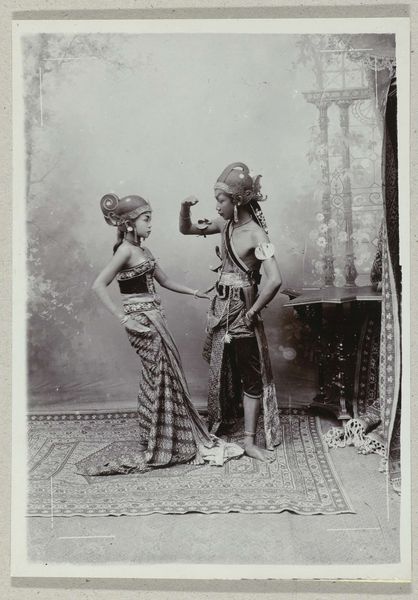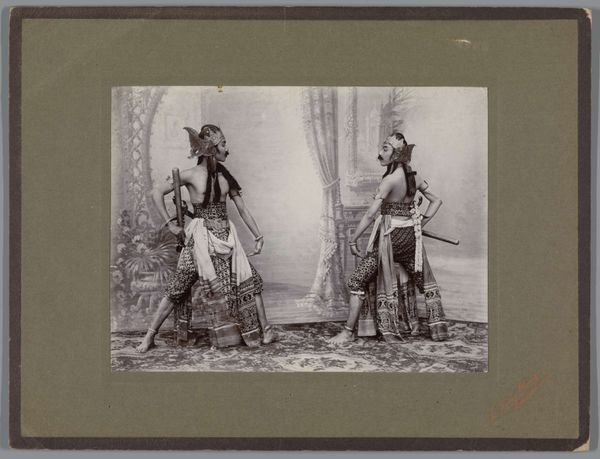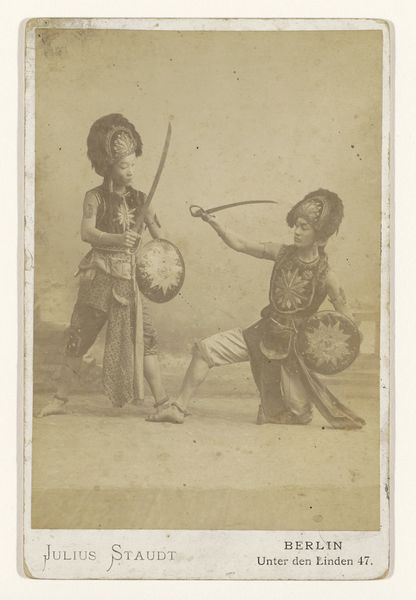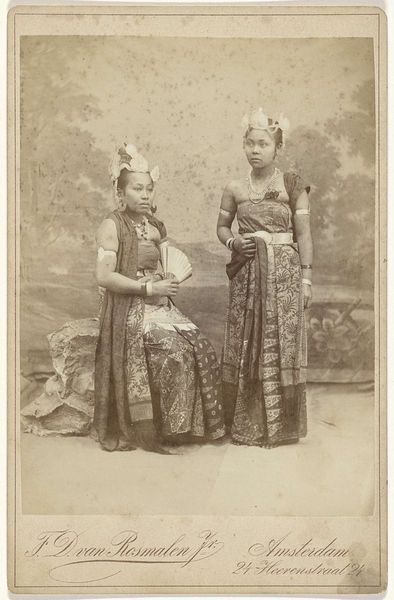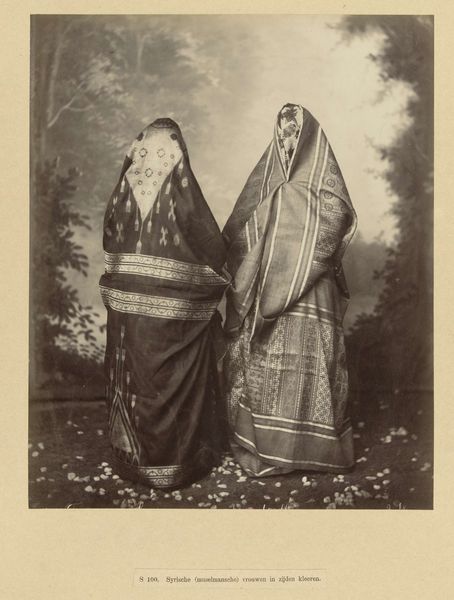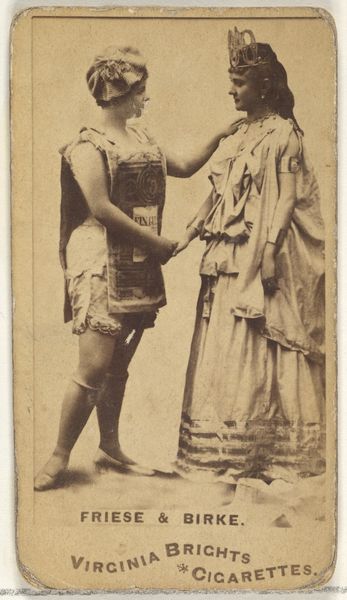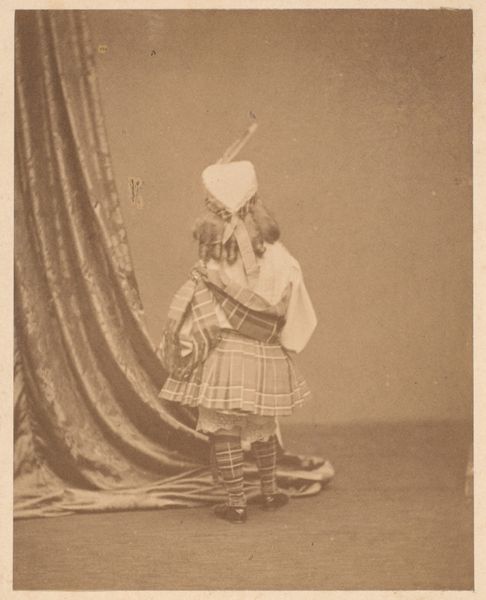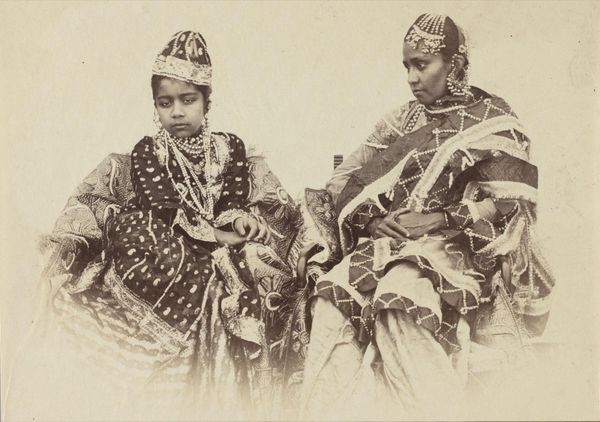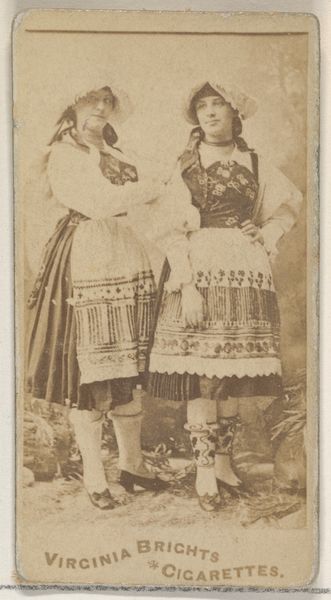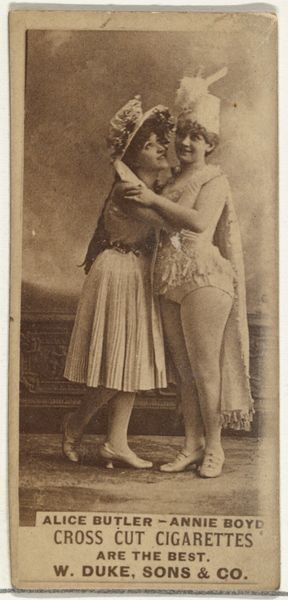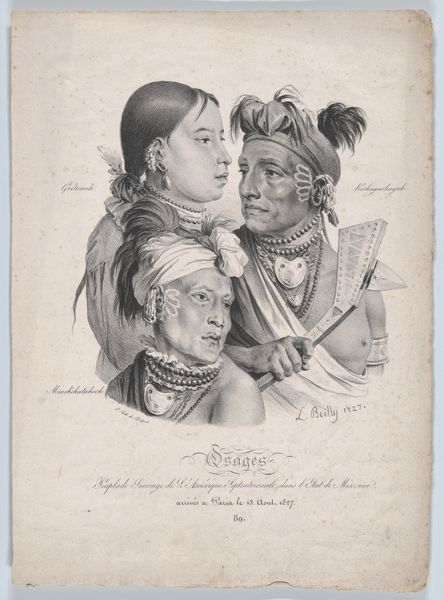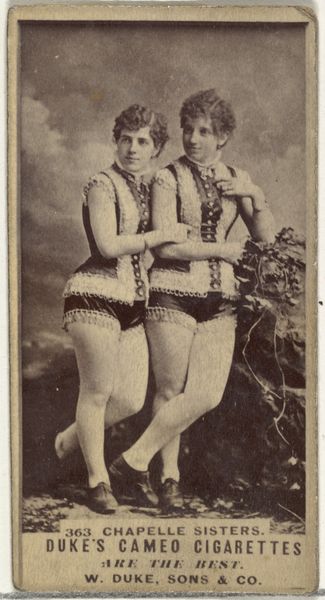
photography
#
portrait
#
16_19th-century
#
asian-art
#
photography
#
19th century
Dimensions: height 94 mm, width 56 mm
Copyright: Rijks Museum: Open Domain
Curator: The subdued tonality of this albumen print, “Twee Javaanse danseressen,” from sometime between 1860 and 1890, draws me in. What are your immediate thoughts? Editor: They seem so young! It's a melancholic image, isn’t it? The composition feels formal and posed, but their hand gesture conveys a certain intimacy. Curator: Woodbury & Page captured more than just a pretty picture; they documented a cultural performance and perhaps a colonial encounter. Dance, particularly in Java, is laden with symbolism, ritual significance, and dynastic power. Editor: You’re right; it is power, or lack of it, that strikes me. Photography's burgeoning power at the time becomes the apparatus that captures these performers and their traditional dress as though cataloging cultural capital. Curator: Yes, precisely. Observe their headdresses and elaborate jewelry—those are not merely decorations. They are signifiers, perhaps referencing ancestral spirits or social status, and each movement would have had specific meanings known to Javanese audiences. But consider too how the reception would shift across audiences removed from that cultural context, filtered as they were through the colonial lens. Editor: Which invites so many questions about agency and representation, particularly because of their youth. It prompts the viewer to consider the place of art within evolving societal hierarchies. This photograph exists both as a record of performance and a social document, entangled with questions of identity and representation in colonial contexts. Curator: The very act of staging the photograph is telling; what message were they attempting to convey to a European audience fascinated by the exotic 'East?' How does the commercial drive affect artistic integrity or the honest representation of a culture? Editor: These considerations allow us to delve into questions about visual legacy. Beyond the aesthetics, this image triggers critical thinking about cultural exchanges and artistic liberties during a specific period. Curator: Precisely, an exploration of culture, commerce, and even the burdens and beauties of visibility. Editor: Absolutely, seeing this through the socio-political history unveils more layers of insight than anticipated.
Comments
No comments
Be the first to comment and join the conversation on the ultimate creative platform.
